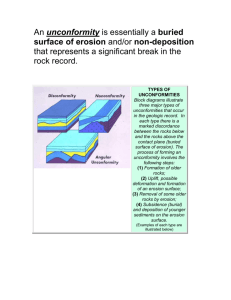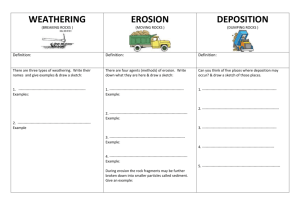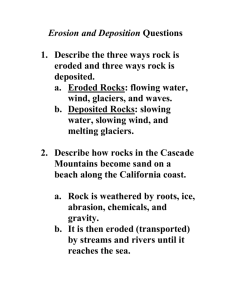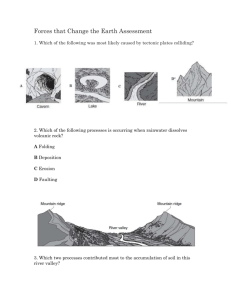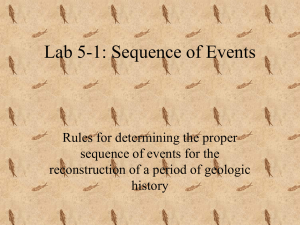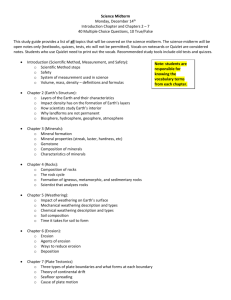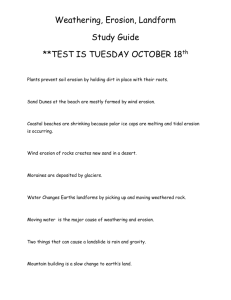Terminology
advertisement
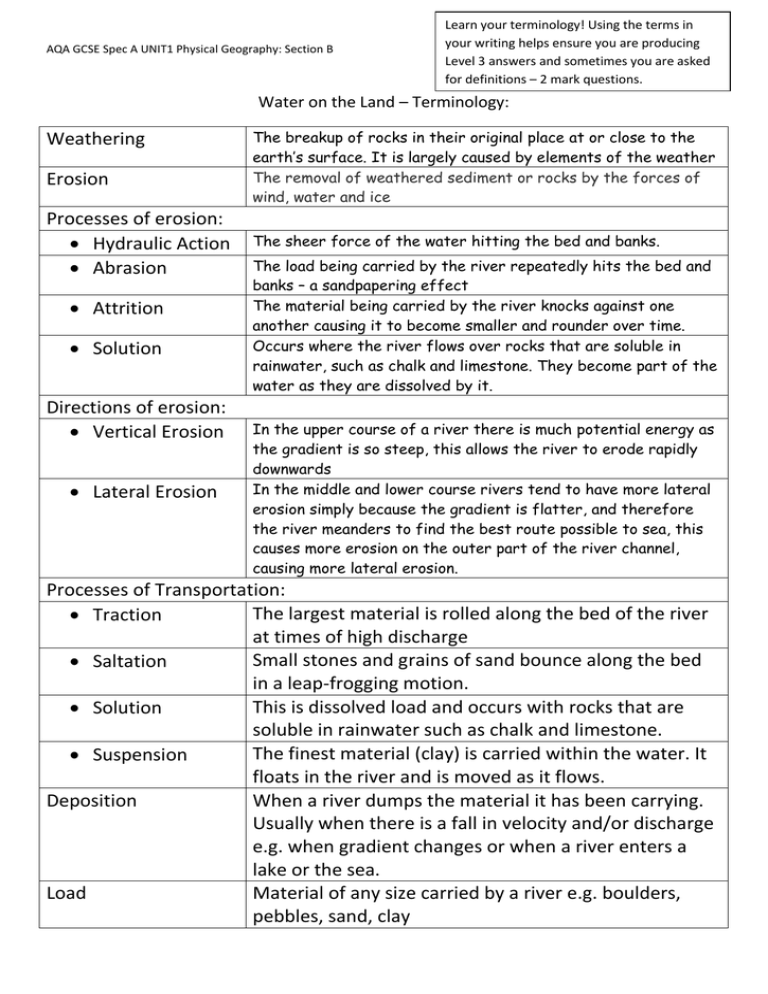
AQA GCSE Spec A UNIT1 Physical Geography: Section B Learn your terminology! Using the terms in your writing helps ensure you are producing Level 3 answers and sometimes you are asked for definitions – 2 mark questions. Water on the Land – Terminology: Weathering Erosion Processes of erosion: Hydraulic Action Abrasion Attrition Solution Directions of erosion: Vertical Erosion Lateral Erosion The breakup of rocks in their original place at or close to the earth’s surface. It is largely caused by elements of the weather The removal of weathered sediment or rocks by the forces of wind, water and ice The sheer force of the water hitting the bed and banks. The load being carried by the river repeatedly hits the bed and banks – a sandpapering effect The material being carried by the river knocks against one another causing it to become smaller and rounder over time. Occurs where the river flows over rocks that are soluble in rainwater, such as chalk and limestone. They become part of the water as they are dissolved by it. In the upper course of a river there is much potential energy as the gradient is so steep, this allows the river to erode rapidly downwards In the middle and lower course rivers tend to have more lateral erosion simply because the gradient is flatter, and therefore the river meanders to find the best route possible to sea, this causes more erosion on the outer part of the river channel, causing more lateral erosion. Processes of Transportation: The largest material is rolled along the bed of the river Traction at times of high discharge Small stones and grains of sand bounce along the bed Saltation in a leap-frogging motion. This is dissolved load and occurs with rocks that are Solution soluble in rainwater such as chalk and limestone. The finest material (clay) is carried within the water. It Suspension floats in the river and is moved as it flows. Deposition When a river dumps the material it has been carrying. Usually when there is a fall in velocity and/or discharge e.g. when gradient changes or when a river enters a lake or the sea. Load Material of any size carried by a river e.g. boulders, pebbles, sand, clay AQA GCSE Spec A UNIT1 Physical Geography: Section B Discharge velocity Lag time Surface runoff Throughflow Groundwater flow Interception Infiltration Impermeable Porous Pervious The volume of water passing a given point at a given time in a river measured in cumecs The speed of the river measured in m/sec The time between peak rainfall and peak discharge Water flowing on top of the ground Water that flows through the soil layer Water that flows through the rocks beneath the river Water that is stored on vegetation so preventing or slowing it from reaching the ground Water sinking into the soil from the ground surface. Rock that does not allow water to soak into it e.g. granite, clay Rocks that have spaces between particles e.g. chalk Rocks that allow water to pass through it via joints and bedding planes e.g. limestone
